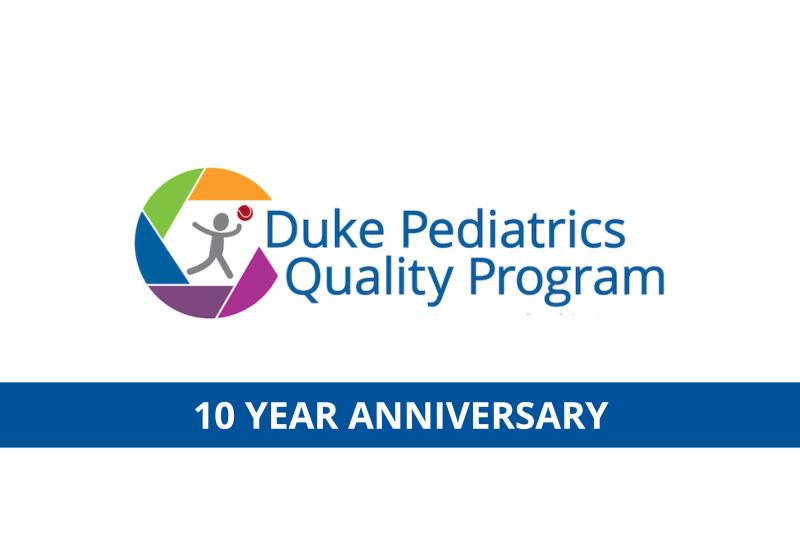
For the past decade, the Duke Pediatrics Quality Program has been setting a new standard for pediatric healthcare quality nationwide. The program is built on three pillars: 1) Education, 2) Measurement, and 3) Quality Outcomes. It aims for a comprehensive approach to improving clinical practices and patient experiences, lowering costs, and ensuring better health outcomes.
"We are the only clinical department at Duke that uses a formal method to develop, review, and update pathways. Our intent is to improve the care for children across the continuum—from primary care clinics, emergency department, specialty clinics, procedural areas and the hospital,” said Heather McLean, MD, Vice Chair of Quality in Duke University’s Department of Pediatrics.
Below are some examples of the Quality Program’s accomplishments:
Pillar 1: Education
The Quality Program has implemented several educational and training initiatives to cultivate proficient leaders and drive meaningful improvements in patient care.
Our flagship training program, the Improvement Science Leadership Course (ISLC), helps faculty develop intermediate competencies in improvement science methods. This enables them to implement academic healthcare quality improvements and lead these teams. Participants in the ISLC have come from across the Duke School of Medicine, including three clinical departments. In total, 32 faculty members and 17 fellows from the Department of Pediatrics' 18 clinical divisions have participated.
Over the past five years, ISLC participants have developed a diverse range of projects during this nine-month program, all aimed at equipping healthcare providers with the necessary tools and a deeper understanding of improvement science. This fosters processes that yield sustainable change. You can view ISLC projects in the Annual Report.
Another educational resource is the “Introduction to Quality Improvement” LMS module. This interactive, web-based module has been utilized by hundreds of users, introducing key concepts and tools used in healthcare quality improvement.
Pillar 2: Measurement
The Quality Program oversees the processes and measures used to ensure compliance with credentialing practices for practitioners, thus maintaining high standards for clinical competency. Additionally, we have worked closely across departmental missions to develop and monitor the measures included in the physician compensation plan designed to reward performance.
Pillar 3: Quality Outcomes
An evidence-based clinical pathways program called Standardization and Translation of Evidence in Pediatrics (STEP) was created to support consistent quality outcomes. STEP improves the system's efficiency, safety, equity, and efficacy of care delivery for children. Since its inception, standardized methods, teams, and tools have been developed, resulting in an updated pathway library that is more streamlined and easier to access for essential information.
These accomplishments are just the beginning. Additional goals have been established for the next five years to continue the Quality Program's efforts in supporting innovation, advocating for continuous improvement, developing resilient leaders, and collaborating across teams.
“This has been an exciting interprofessional collaborative effort aimed at developing evidence-based clinical standards for pediatric patients. Key collaborations within our department and across the Duke Health system have played an essential role in helping us achieve our strategic goals, improve processes, and create a coordinated system for better care,” said Dr. McLean.
By investing in a system-level quality and safety program, Duke Pediatrics continues to lead the way in advancing standards for pediatric healthcare.